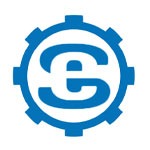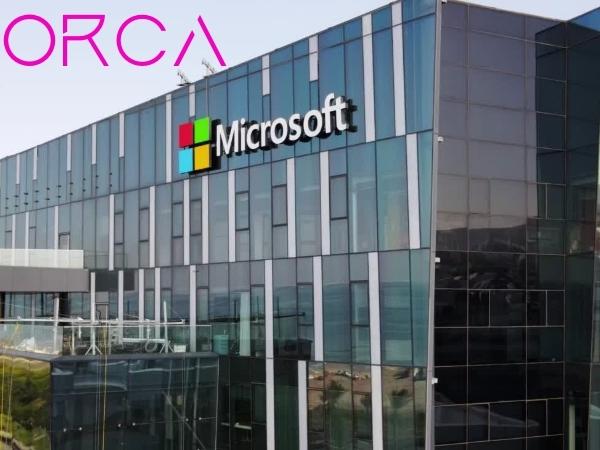Key technologies for 100% renewable energy
Key technologies for 100% renewable energy
Making the transition requires substantial shifts in ideas: new operating procedures, adoption of the newest information and communication technology, evolved business models for electric utility, and updated regulatory frameworks.
This article looks at several new approaches to ease the various shifts identified above and ensure the success of the transition to a sustainable energy system. These approaches must include increasing interconnection capacity among geographical areas. Higher interconnection and transmission capacity at regional, national and international levels allow greater flexibility in power transmission between the regions with surplus of renewable generation and other regions with demand to reduce variability. Another option is the hybridization of the contribution of different DER to complement each other at different times (e.g., solar power during the day, wind power overnight). This means including concentrated solar power, biomass and biogas plants to provide base-load power. Generation curtailments need to be avoided in order not to miss any kWh produced. In general, the larger the geographic dispersion between plants, the lower the combined variability will be. A mix of technologies within a balancing area enhances congestion management and reduces the need for new (and back-up) generation. They can provide important advantages in terms of increasing generation flexibility and reducing the variability of the overall VRE contribution. Additionally, this can be improved by local ESS, and building up complementary demand response (DR) approaches to meet peak demand.
Demand-side management, which includes DR and investments in energy efficiency, is seen as an effective remedy to limit the required investments in transmission and operating reserves. With DR algorithms, the demand can be modified in response to the request of the system operator in order to accomplish a specific goal such as peak shaving, contingency control, or frequency control. DR can be activated via market price signals (time-based rates or other forms of financial incentives) to drive certain kinds of behavior or responses from prosumers. This includes reducing load during peak times, and shifting it earlier or later in the day to off-peak times, based on the wholesale market price. This has the potential to change the demand profile to accommodate the variability of the VRE.

Figure 1.12 Integration of onsite PV generation, battery storage and load shifting to optimise residential energy consumption
But most interesting here is to activate via local price signals: Some kind of local price signals can be provided by the energy management system based on grid hosting capacity (HC) information and generation-demand forecasts. These price signals can be used to establish thresholds or triggers beyond which specific DR measures are activated, smoothing demand peaks and/or meeting peak demand with VRE when available Key technologies for 100% renewable energy. In PV plants, for example, where maximum production takes place around midday, this DR program may eventually include ‘Direct load control’ of end-use appliances to shift this evening electricity demand towards off-peak periods to central hours of the day, as shown in Figure 1.12.
In both cases the use of the advanced metering infrastructure (AMI) as the baseline for this deployment is needed. Utilities have long collected customer usage data for billing purposes. However, monthly bills provide little or no information to customers about their actual use of electricity. Despite their initial promises, measuring the consumption of homes and businesses at 15-min or hourly intervals and take advantage of this information is still challenging and costly, even in territories with AMI or automated meter reading systems Key technologies for 100% renewable energy.
If usage data could be consistently obtained from the retail electric utilities, new software applications could be widely applied to a huge profit. Untapped DR resources or incentives combined with ESS may be useful for supplying the flexibility and reserve capacity desired and reducing the impact on the power system. With the adequate forecasting tools included (with a time horizon from minutes to 48 h), DR programs entail an important opportunity for the optimization of consumption profiles to smooth the output profile and mitigate large injection peaks of their energy system before the net production reaches the grid.

Figure 1.13 Representation of the vicious cycle of disruptive forces
Finally, an additional approach is to include on-demand dispatchable loads. Such ‘demand sinks’ could include thermal energy storage solutions (water heating, refrigerated warehouses, ice production, etc.), water desalination, as well as pumping and irrigation-related loads, which may be shifted to off-peak times, based on grid needs.
Integration costs are due not only to the specific characteristics of VRE technologies but also to the intrinsic power system flexibility to deal with greater variability. With the potential to become technically and economically feasible alternatives, many are growing very fast. Because of this confluence of forces, industry and stakeholders should proactively assess the impacts and possible solutions to address the disturbing challenges in a timely fashion. Even though their application still depends on specific states and markets, it is very likely they would disrupt many aspects of the current energy framework, especially with regard to electric utilities. Figure 1.13 illustrates the forces currently oppressing the traditional utility business model. As DER reduces revenues, utilities try to recoup their costs by raising fares of traditional customers, creating an implicit cross-subsidy of DER users. And because the higher rates, in turn, create incentives for more customers to install their own DER, a vicious circle is formed Key technologies for 100% renewable energy.
To preserve long-term customer fidelity, to fully accommodate an increasing number of clients that are in the forefront of being ‘prosumer’, utilities should transform themselves from energy suppliers to energy service advisor (Figure 1.14).

Figure 1.14 The journey to consumer empowerment

Figure 1.15 Benefits of the smart grids
In conclusion, the large-scale integration of VRE into power grids requires substantial transformations to increase the power system flexibility: (1) to allow bidirectional electricity flow, which is aimed to ensure grid PQR when including DER; (2) to establish DR mechanisms aimed at reducing peak-loads in order to deal with increased variability; (3) to expand grid interconnection at the regional and international level aimed at increasing balancing capabilities and stability; (4) include technologies and procedures to ensure adequate stability and control (e.g., frequency, voltage, power balance) in the presence of VRE and (5) to exploit the ESS potential to store electricity surplus from VRE. Smart grids have the potential to benefit the whole value chain so that system operators can get the required power security and quality of supply (Figure 1.15).
Demand-side management, which includes DR and investments in energy efficiency, is seen as an effective remedy to limit the required investments in transmission and operating reserves. With DR algorithms, the demand can be modified in response to the request of the system operator in order to accomplish a specific goal such as peak shaving, contingency control, or frequency control. DR can be activated via market price signals (time-based rates or other forms of financial incentives) to drive certain kinds of behavior or responses from prosumers. This includes reducing load during peak times, and shifting it earlier or later in the day to off-peak times, based on the wholesale market price. This has the potential to change the demand profile to accommodate the variability of the VRE.
Figure 1.12 Integration of onsite PV generation, battery storage and load shifting to optimise residential energy consumption
But most interesting here is to activate via local price signals: Some kind of local price signals can be provided by the energy management system based on grid hosting capacity (HC) information and generation-demand forecasts. These price signals can be used to establish thresholds or triggers beyond which specific DR measures are activated, smoothing demand peaks and/or meeting peak demand with VRE when available Key technologies for 100% renewable energy. In PV plants, for example, where maximum production takes place around midday, this DR program may eventually include ‘Direct load control’ of end-use appliances to shift this evening electricity demand towards off-peak periods to central hours of the day, as shown in Figure 1.12.
In both cases the use of the advanced metering infrastructure (AMI) as the baseline for this deployment is needed. Utilities have long collected customer usage data for billing purposes. However, monthly bills provide little or no information to customers about their actual use of electricity. Despite their initial promises, measuring the consumption of homes and businesses at 15-min or hourly intervals and take advantage of this information is still challenging and costly, even in territories with AMI or automated meter reading systems Key technologies for 100% renewable energy.
If usage data could be consistently obtained from the retail electric utilities, new software applications could be widely applied to a huge profit. Untapped DR resources or incentives combined with ESS may be useful for supplying the flexibility and reserve capacity desired and reducing the impact on the power system. With the adequate forecasting tools included (with a time horizon from minutes to 48 h), DR programs entail an important opportunity for the optimization of consumption profiles to smooth the output profile and mitigate large injection peaks of their energy system before the net production reaches the grid.
Figure 1.13 Representation of the vicious cycle of disruptive forces
Finally, an additional approach is to include on-demand dispatchable loads. Such ‘demand sinks’ could include thermal energy storage solutions (water heating, refrigerated warehouses, ice production, etc.), water desalination, as well as pumping and irrigation-related loads, which may be shifted to off-peak times, based on grid needs.
Integration costs are due not only to the specific characteristics of VRE technologies but also to the intrinsic power system flexibility to deal with greater variability. With the potential to become technically and economically feasible alternatives, many are growing very fast. Because of this confluence of forces, industry and stakeholders should proactively assess the impacts and possible solutions to address the disturbing challenges in a timely fashion. Even though their application still depends on specific states and markets, it is very likely they would disrupt many aspects of the current energy framework, especially with regard to electric utilities. Figure 1.13 illustrates the forces currently oppressing the traditional utility business model. As DER reduces revenues, utilities try to recoup their costs by raising fares of traditional customers, creating an implicit cross-subsidy of DER users. And because the higher rates, in turn, create incentives for more customers to install their own DER, a vicious circle is formed Key technologies for 100% renewable energy.
To preserve long-term customer fidelity, to fully accommodate an increasing number of clients that are in the forefront of being ‘prosumer’, utilities should transform themselves from energy suppliers to energy service advisor (Figure 1.14).
Figure 1.14 The journey to consumer empowerment
Figure 1.15 Benefits of the smart grids
In conclusion, the large-scale integration of VRE into power grids requires substantial transformations to increase the power system flexibility: (1) to allow bidirectional electricity flow, which is aimed to ensure grid PQR when including DER; (2) to establish DR mechanisms aimed at reducing peak-loads in order to deal with increased variability; (3) to expand grid interconnection at the regional and international level aimed at increasing balancing capabilities and stability; (4) include technologies and procedures to ensure adequate stability and control (e.g., frequency, voltage, power balance) in the presence of VRE and (5) to exploit the ESS potential to store electricity surplus from VRE. Smart grids have the potential to benefit the whole value chain so that system operators can get the required power security and quality of supply (Figure 1.15).

.png)




